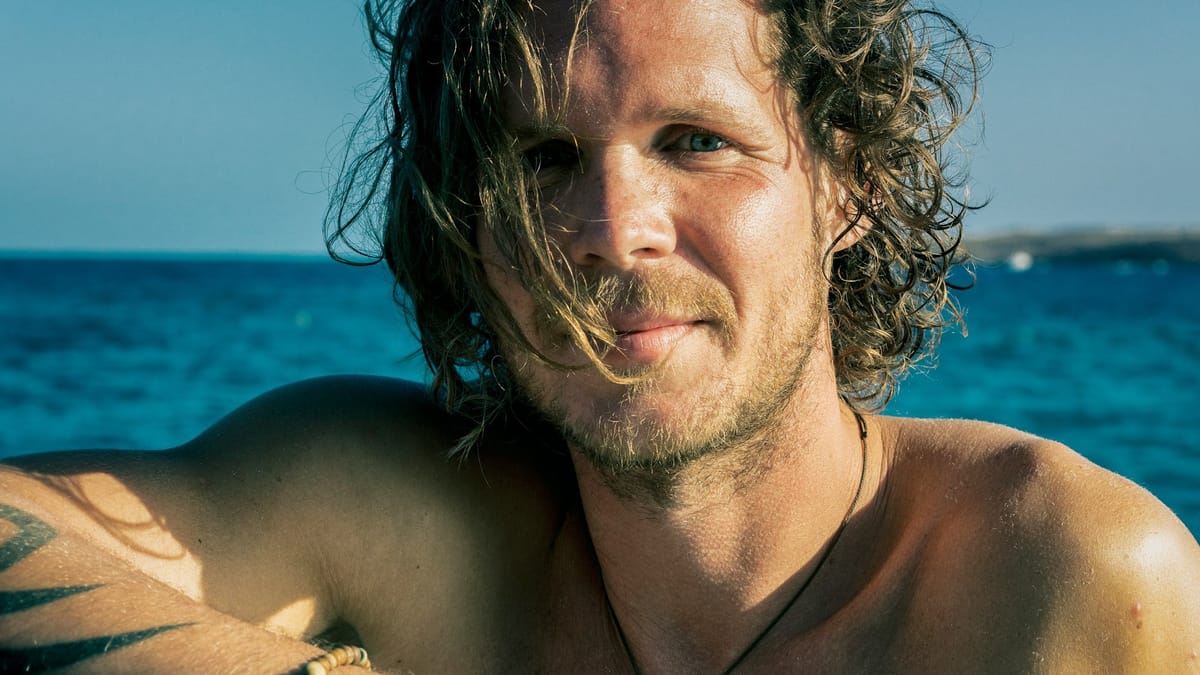The Wild Man Within: Leveraging Ancient Initiation Principles for Modern Men's Mental Health
Why are rates of male depression and anxiety soaring? Modern men often feel lost, disconnected from a vital inner force – the 'Wild Man' archetype. This ancient concept might hold the key to understanding and healing today's masculinity crisis. Let's explore how.

Addressing the 21st-Century Masculinity and Mental Health Crisis
Beneath the surface of modern masculinity lies an untamed force—the Wild Man archetype—whose suppression might be fueling the unprecedented mental health crisis among men today, begging the question: could the ancient path of initiation hold the key to reclaiming male psychological wholeness?
The landscape of gender roles in the 21st century has undergone profound shifts, leaving many men grappling with a pervasive sense of identity loss and existential uncertainty. This disorientation often manifests as rising rates of depression, anxiety, and general dissatisfaction with life—challenges that healthcare professionals encounter with increasing frequency. Robert Bly’s seminal work, Iron John: A Book About Men (1990), provides a compelling framework for understanding this contemporary crisis. Drawing upon fairy tales and Jungian archetypes, Bly argues that modern men have become disconnected from a fundamental aspect of their psyche: the primal, instinctual "Wild Man" . This archetype represents raw vitality, emotional depth, and a connection to nature—qualities often suppressed in contemporary society.
Bly's narrative, rooted in the Grimm brothers' tale, outlines a mythic process of male initiation involving separation, descent, and integration. For healthcare providers, these stages resonate with established psychological concepts crucial for patient recovery and self-actualization. This article delves into how these ancient initiation principles can inform modern mental health strategies, mentorship models, and holistic care approaches, offering actionable insights for treating the complex challenges facing men today.
The Wild Man Archetype: Reconnecting with Primal Identity
Defining the Wild Man: Instinct, Vitality, and Nature
In Iron John, the Wild Man is not merely a figure of folklore but a symbolic representation of the untamed, primal aspects of masculinity . He embodies raw emotional energy, instinctual drives, sexuality, creativity, and a deep connection to the natural world. Bly contrasts this vital figure with what he terms the "soft male," a man stripped of his vitality, often characterized by passivity and an inability to engage fully with his emotions or assert his authentic self. This disconnection from the Wild Man archetype can lead to a sense of emptiness and disengagement.
Clinical Relevance: The Wild Man and Mental Health
The suppression or loss of connection to one's "primal identity" is increasingly recognized as a contributing factor to mental health issues in men . When core aspects of the self—such as anger, creativity, or physicality—are repressed, it can lead to internal conflict, anxiety, and depression . The Wild Man archetype serves as a powerful symbol for therapists to help patients identify and reconnect with these suppressed elements.
Central to Jungian psychology is the concept of "shadow work," the process of exploring and integrating the hidden, often repressed, parts of the psyche . The Wild Man can be seen as embodying the masculine shadow—the unacknowledged or disowned aspects of a man's personality . Integrating these shadow elements is considered vital for achieving psychological wholeness and greater self-awareness . Engaging with the Wild Man archetype encourages men to acknowledge and embrace their complexity, rather than rejecting parts of themselves that don't conform to societal expectations.
Actionable Insight for Healthcare Professionals
Healthcare professionals can utilize the concept of the Wild Man to guide therapeutic interventions. Encouraging patients to explore repressed emotions through creative outlets like art or journaling directly engages the shadow work process . Similarly, incorporating nature-based therapies can provide a tangible pathway for reconnecting with the primal, embodied aspects of the self that the Wild Man represents . These approaches foster resilience and provide alternative avenues for healing that go beyond traditional talk therapy.
Stages of Male Initiation: A Psychological Roadmap
Bly's interpretation of Iron John outlines a three-stage process of male initiation, each with distinct psychological parallels relevant to modern therapeutic practice.
Stage 1: Separation from the Maternal Realm
The initial stage involves the protagonist stealing a key from under his mother’s pillow—a symbolic act representing the necessary break from maternal dependency and the transition towards independence. Bly posits that prolonged attachment to the maternal realm can stifle masculine development, potentially leading to passivity or reactive rebellion.
Clinical Parallels: This stage aligns with Erikson's psychosocial stage of Identity vs. Role Confusion, where adolescents strive to develop a coherent sense of self distinct from their family of origin. Difficulties in achieving this separation can result in codependency or oppositional behavior. Research supports the idea that overly enmeshed maternal relationships can negatively impact young men's psychological well-being, correlating with higher rates of anxiety.
Actionable Insight: Clinicians working with adolescent and young adult males should assess family dynamics, particularly the nature of maternal bonds. Encouraging age-appropriate autonomy and fostering independence are crucial steps in preventing identity crises and promoting healthy masculine development.
Stage 2: Descent into Ashes (Katabasis) and the Wounded Healer
The second stage, known as "katabasis," involves a descent into chaos, hardship, or the "road of ashes" . In the myth, the protagonist performs menial labor in the king's kitchen, symbolizing a fall from grace, embracing humility, and confronting shame. This phase is crucial for psychological growth.
Therapeutic Applications: Katabasis mirrors the profound psychological challenges individuals face during trauma, grief, or periods of significant life upheaval—often described metaphorically as a "dark night of the soul." It represents the necessary collapse of the ego structure to allow for deeper understanding and transformation . Carl Jung's concept of the "Wounded Healer" is particularly relevant here. Therapists who acknowledge their own vulnerabilities and psychological wounds can often establish deeper trust and rapport with patients, facilitating healing. The process of katabasis allows individuals to confront and process past wounds, integrating them into their evolving sense of self.
Case Study Application: Consider the case of a veteran struggling with PTSD. Framing his combat experience not solely as a traumatic failure but as a necessary descent—a katabasis—that led to profound personal insights and resilience can be a powerful reframing tool in narrative therapy. This perspective transforms suffering into a meaningful part of the journey towards wholeness.
Actionable Insight: Healthcare providers should recognize the therapeutic value of descent experiences. Supporting patients through periods of psychological difficulty, validating their suffering, and helping them find meaning in their struggles is essential. Narrative therapy techniques can be particularly effective in helping patients reframe their "descent" as a transformative phase rather than merely a setback.
Stage 3: Encountering the Feminine: Integration and Wholeness
The final stage involves the protagonist's encounter with the King's daughter, symbolizing the integration of the feminine aspect of the psyche. Bly emphasizes that true masculine wholeness requires embracing qualities often coded as feminine—empathy, intuition, relationality, and the capacity for vulnerability—rather than adhering to rigid, exclusive masculine norms.
Modern Implications: The suppression of so-called "feminine" traits in men, a hallmark of "toxic masculinity," is strongly correlated with negative mental health outcomes, including increased aggression, poor emotional regulation, and higher rates of suicide . Practices that cultivate mindfulness, emotional awareness, and relational skills—which often align with these traditionally feminine qualities—have been shown to reduce stress and improve overall well-being in male patients .
Actionable Insight: Therapists should actively encourage male patients to explore and develop their capacity for empathy and emotional expression. Techniques such as group therapy, role-playing exercises, and mindfulness practices can help counterbalance tendencies towards hyper-rationality or emotional suppression, fostering a more integrated and psychologically healthy masculine identity.
The Role of Mentorship in Modern Healthcare
The Wild Man as Mentor: Guiding the Initiate
Within Bly's framework, the Wild Man also serves as a crucial mentor figure, guiding the young protagonist through the trials of initiation. This highlights the critical importance of elder wisdom and guidance in the process of maturation—a resource that Bly argues is largely absent in modern society.
Healthcare Applications: Therapeutic Mentorship Models
The role of the mentor or guide is equally vital in therapeutic contexts. Structured mentorship programs have demonstrated significant positive outcomes for various populations, including at-risk youth and individuals in addiction recovery . The presence of a trusted guide who embodies resilience and self-acceptance can provide crucial support and modeling.
Peer support models exemplify this principle effectively. For instance, veteran-to-veteran mentorship programs have proven successful in reducing isolation and symptoms of PTSD by connecting individuals with shared experiences . The mentor's role is not to provide all the answers but to walk alongside the initiate, offering support and witnessing their journey.
Actionable Insight: Healthcare settings should consider integrating formal mentorship models into treatment plans. This could involve pairing patients with trained peer mentors or incorporating elements of guidance and support groups that mimic the communal and instructive aspects of traditional initiation rites. Clinicians themselves act as initiators, guiding patients through their own psychological journeys.
Implications for Mental Health and Therapeutic Practice
Bly's stages of initiation offer a valuable framework for conceptualizing and treating identity crises and related mental health challenges in men.
Assessment: Clinicians can use this model to assess where a patient might be "stuck" in their developmental journey—whether they struggle with separation, are overwhelmed by a psychological descent, or grapple with rigid gender role expectations.
Ritualized Healing: Incorporating symbolic acts or structured experiences (such as vision quests, art therapy, or nature immersion) can mark progress and provide tangible milestones in the healing process, echoing the rites of passage found in traditional societies.
Community Integration: Group therapy settings naturally mirror the communal aspect of traditional initiation, providing peer support and shared learning experiences essential for recovery and growth.
Evidence Base: The effectiveness of approaches aligned with this framework is supported by research. For example, narrative therapy, which helps individuals reframe their life experiences as a meaningful journey, has been shown in meta-analyses to significantly reduce relapse rates in depression . This aligns with the archetypal journey described by Bly, where meaning-making is central to transformation.
Conclusion: Rediscovering the Wild Within for Psychological Wholeness
Robert Bly's Iron John is not a call to regress to a pre-modern state but an invitation to find balance. By acknowledging and integrating the vitality of the Wild Man, enduring the necessary descents of katabasis, and embracing the full spectrum of human qualities—including those traditionally associated with the feminine—individuals can move towards greater psychological wholeness and resilience.
For healthcare professionals, the archetypes and stages presented in Bly's work serve as powerful tools. They provide a language and a framework for understanding the deeper psychological currents at play in male mental health. By recognizing the universal patterns of separation, descent, and integration, clinicians can offer more nuanced, compassionate, and ultimately more effective care. This ancient wisdom, when thoughtfully applied, illuminates pathways towards renewed purpose, self-acceptance, and enduring well-being for men navigating the complexities of the modern world.
Personal Anecdote:
Jordan, a 34-year-old software engineer, sat across from me, his usual confident demeanor replaced by a hollow exhaustion. "I feel like I'm drowning," he admitted, "but I don't even know why. I have a good job, a loving family... yet I'm numb." His voice cracked. "I pushed everyone away after my dad died last year. I thought I had to be the strong one, handle it alone. But now, I just feel... lost."
Jordan's story wasn't unique. He embodied the modern man, successful on paper, yet grappling with an internal void—a disconnection from his primal self, his Wild Man. The grief he'd buried wasn't just sadness; it was a profound katabasis, a descent he'd tried to bypass with stoicism. We explored his suppressed emotions, the parts of himself he'd deemed unacceptable—his vulnerability, his need for support. We talked about the absent mentorship in his life, the lack of guiding rituals to mark his transition from son to independent man.
Through narrative therapy, Jordan began to reframe his grief not as failure, but as a necessary descent into ashes, a katabasis leading to potential rebirth. He started journaling, reconnecting with his creativity, and joined a men's group. Slowly, the numbness gave way to feeling. Jordan's journey illuminated a crucial truth: healing often requires descending into the darkness to ultimately rediscover the vital, wild essence within.
10 Key Takeaways
- The Modern Masculinity Crisis: Many men today face a profound identity crisis and rising mental health issues (depression, anxiety) linked to disconnection from traditional, instinctual masculine roles and a lack of clear pathways to mature identity.
- The Wild Man Archetype: This Jungian concept represents the primal, instinctual, and vital aspects of masculinity (raw emotion, creativity, connection to nature) that are often suppressed in modern society, contributing to psychological distress when disconnected.
- The Necessity of Separation: Healthy masculine development requires separating from excessive maternal dependency and childhood roles, fostering independence and a distinct sense of self, crucial for preventing codependency or rebellion.
- Embracing Katabasis (Psychological Descent): Personal growth often necessitates a "descent into ashes" – confronting trauma, shame, and ego collapse. This challenging phase, akin to a "dark night of the soul," is essential for deeper self-understanding and resilience.
- The Power of the Wounded Healer: Therapists and mentors who acknowledge their own psychological wounds can foster deeper trust and facilitate healing, embodying the archetype of the guide who has navigated their own katabasis.
- Integrating the Feminine: Psychological wholeness in men requires embracing traditionally "feminine" qualities like empathy, intuition, and emotional vulnerability, moving beyond rigid, harmful definitions of masculinity.
- The Critical Role of Mentorship: Guidance from wise elders or mentors is vital for navigating life's transitions and psychological challenges. Its absence in modern society leaves many men without crucial support structures.
- Therapeutic Applications of Initiation Principles: Concepts like separation, descent, and integration can be used in therapy to assess patient needs, guide treatment (e.g., narrative therapy, shadow work), and structure healing experiences.
- Actionable Therapeutic Strategies: Healthcare professionals can employ nature-based therapies, creative expression, mindfulness, group therapy, and structured mentorship programs to help patients reconnect with suppressed aspects of self and foster holistic well-being.
- Ancient Wisdom for Modern Healing: Time-tested archetypal frameworks, like those found in myths of male initiation, offer valuable insights and practical tools for understanding and addressing contemporary mental health challenges, emphasizing the universal human need for meaning, transformation, and community.
Your Top Questions Answered
What is the wild man archetype?
The Wild Man has been discussed in Freudian terms as representative of the "potentialities lurking in the heart of every individual, whether primitive or civilized, as his possible incapacity to come to terms with his socially provided world."
What are the 12 archetypes of men?
The 12 Jungian Archetypes As we journey deeper into the labyrinth of the human psyche, we encounter the 12 Jungian (1964) archetypes — timeless symbols that illuminate the path to understanding the depths of human personality and psychology (Mills, 2018).
These archetypes, rooted in Jung’s profound exploration of the collective unconscious, offer profound insights into the universal themes and patterns that shape our thoughts, emotions, and behaviors (Corr & Matthews, 2009; Neill, 2021; Pearson, 1991).
- The innocent Represents purity and optimism, desiring to be happy and free Strategy involves doing things right and embracing faith and optimism
- The orphan Desires connection and belonging, fearing being left out or standing out Strategy involves developing ordinary virtues, being down to earth, and empathizing with others
- The hero Seeks to prove worth through courageous acts, fearing weakness and vulnerability Strategy is to be strong and competent, although may struggle with arrogance
- The caregiver Motivated by a desire to protect and care for others, fearing selfishness and ingratitude Strategy involves doing things for others, though may fall into martyrdom and exploitation
- The explorer Craves freedom and authenticity, fearing getting trapped or inner emptiness Strategy includes journeying, seeking new experiences, and maintaining autonomy
- The rebel Yearns for revolution or change, fearing powerlessness or ineffectuality Strategy involves disruption or shocking, but may risk crossing into crime
- The lover Seeks intimacy and connection, fearing loneliness or rejection Strategy is to become more attractive physically and emotionally, but may lose identity
- The creator Strives to create enduring value, fearing mediocrity Strategy is developing artistic control and skill, despite struggles with perfectionism
- The jester Embraces joy and humor, fearing boredom or boring others Strategy includes playing, making jokes, and being funny, though may struggle with frivolity
- The sage Driven by a quest for truth, fearing being misled or ignorant Strategy involves seeking knowledge and understanding, though may struggle with inaction
- The magician Aims to make dreams come true, fearing unintended negative consequences Strategy includes developing a vision and finding win-win solutions, though may become manipulative
- The ruler Desires control and prosperity, fearing chaos or being overthrown Strategy involves exercising power and leadership, though may struggle with authoritarianism
References
Here is the list with all numbers and brackets removed:
X- Modern Masculinity Crisis & Men's Mental Health:
- https://www.ramhp.com.au/get-help-now/self-help-resources/podcasts/s3-e5-masculinity-mental-health/
- https://www.sciencedirect.com/science/article/pii/S2667321525000745
- https://humanityhealthgroup.com.au/podcast/a-crisis-of-modern-masculinity/
The Wild Man Archetype (Jungian Masculinity):
- https://xyonline.net/content/wildmen
- https://www.depthinsights.com/Depth-Insights-scholarly-ezine/e-zine-issue-3-fall-2012/why-the-men-went-into-the-woods-jungian-psychology-and-the-archetype-of-the-wild-man-by-dennis-pottenger/
- https://www.philosophyforlife.org/blog/the-wild-man-2
Necessity of Separation in Masculine Development:
- https://pubmed.ncbi.nlm.nih.gov/15142290/
- https://citeseerx.ist.psu.edu/document?repid=rep1&type=pdf&doi=6756d8a26c248cae1b87a90d9355d328fc1d4264
- https://www.sciencedirect.com/science/article/pii/S0361923024001928
Embracing Katabasis (Psychological Descent):
- https://pepsic.bvsalud.org/pdf/jung/v38n1/en_04.pdf
- https://ksrc.ca/exploring-the-concept-of-katabasis-in-psychotherapy/
- https://www.junginla.org/bookstore/descent-soul-and-archaic-katabasis-and-depth-psychology
Power of the Wounded Healer Archetype:
Integrating the Feminine:
- https://soulseekerspath.com/how-to-balance-your-masculine-and-feminine-energy/
- https://www.enotalone.com/article/personal-growth/5-ways-to-embrace-your-feminine-for-man-side-r11419/
Critical Role of Mentorship:
- https://www.linkedin.com/pulse/role-mentorship-mens-personal-growth-guiding-path-adam-feuerstein-0jk6c
- https://www.linkedin.com/pulse/power-mentorship-how-male-role-models-influence-mark-varkevisser-ozqac
Therapeutic & Initiatory Applications (Separation, Descent, Integration):
Actionable Therapeutic Strategies/Nature-Based Therapy:
Ancient Wisdom and Archetypes for Modern Healing:




